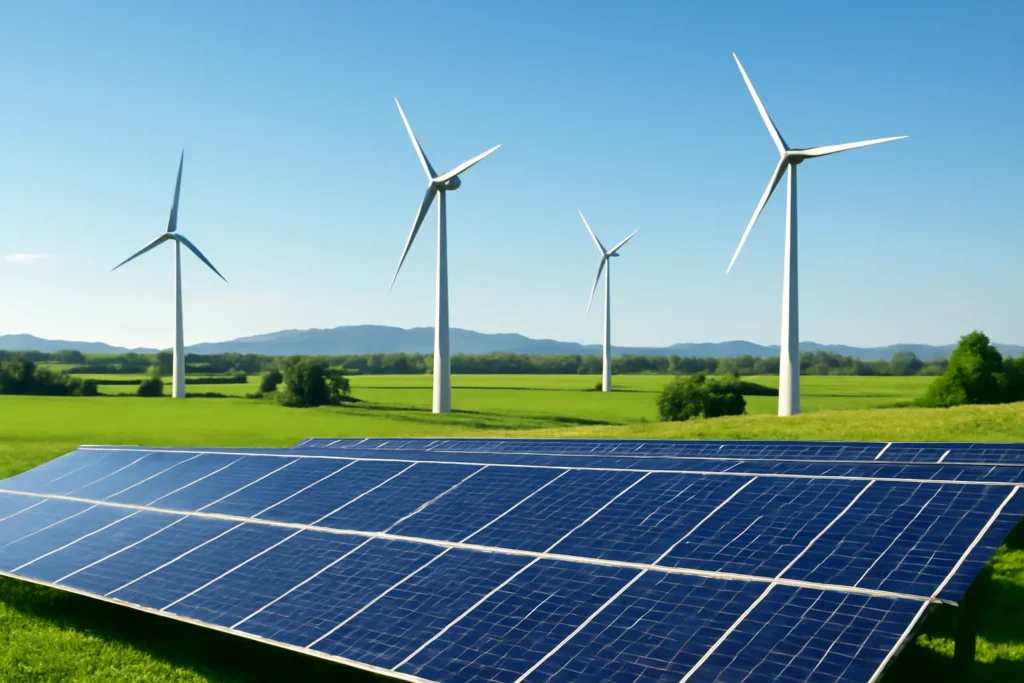Shifting Sands: The Crossroads of North American Energy Policy
Picture a sprawling, interconnected energy grid stretching from the icy oil sands of Alberta to the refineries along the Texas Gulf Coast—a system once celebrated as a model for international cooperation. Now, that grid is humming with disquiet. Recent moves to shutter major power plants, intensify domestic production, and enforce aggressive renewable mandates threaten not only the delicate balance of North America’s energy equation but the wallets and well-being of everyday families. According to the North American Electric Reliability Corporation’s 2024 Long-Term Reliability Assessment, Michigan offers a microcosm of broader North American anxieties: projected energy demand could soon overwhelm a shrinking generation capacity, especially as aging plants are decommissioned and green policies ramp up.
State Senator Roger Victory and his Republican colleagues recently issued a fervent warning to Washington and the Trump-aligned federal leadership about these mounting threats to energy reliability. Their letter decried the scheduled closure of Michigan’s J.H. Campbell Power Plant, a facility they argue has “years of useful life left.” While their tone veers toward alarmism, there is a kernel of truth in their concern: as states transition to renewables without sufficient backup, reliability challenges loom large.
Beyond Borders: Why Energy Integration Still Matters
A closer look reveals just how much North America’s prosperity relies on robust cross-border energy trade. Over decades, open markets and shared infrastructure have shielded the continent from the volatility of overseas supplies. According to the Brookings Institution, the United States, Canada, and Mexico together form the world’s largest integrated oil and gas market—one that drove capital investments from $50 billion in 2001 to $250 billion by 2014.
Yet proposals to retreat behind national walls, such as tariffs on Canadian or Mexican energy, could dismantle decades of progress. This would be a reversal reminiscent of the energy crises of the 1970s, when protectionism bred scarcity and economic pain. As Yale economic historian Paul Sabin stresses, “Energy policy tied to isolationism almost always raises costs and deepens insecurity.” Regional energy integration is not merely a logistical convenience—it is a competitive imperative in a world where climate disruption and geopolitical uncertainty threaten supply chains at every turn. The alternative? Fragmentation, higher costs, and increased vulnerability to crises.
“North American prosperity has always depended on energy cooperation, not competition—we walk away from collaboration at our peril.”
North American energy security is not a mere talking point but a living reality. The grid doesn’t care about politics—it responds to supply and demand. Cities in Texas and California have already faced rolling blackouts thanks to generation shortfalls and climate extremes. Imposing artificial barriers or ignoring the pace of technological adoption will only make these problems worse. Global challenges—pandemic shocks, war-induced oil volatility, and supply chain chaos—underscore the value of resilient, interconnected markets.
Navigating the Renewable Transition: Fear, Fact, and the Path Forward
Legislators warn that Michigan’s green energy policies will “compromise grid security,” yet missed from their argument is any acknowledgment of the climate crisis—a threat far greater and more insidious. Renewable mandates are not radical experiments; they are backed by mounting science, overwhelming public support, and the urgent reality of a warming planet. According to a 2024 Pew Research survey, nearly two-thirds of Americans favor accelerating the transition to renewable energy, even if it means short-term disruptions.
The real challenge isn’t whether we should shift to renewables, but how quickly and equitably we can do it while maintaining affordability and reliability for all communities. That means investing in modern grid technology, energy storage, and regional cooperation—not doubling down on fossil fuel dependence. Harvard climate policy expert Leah Stokes asserts, “Smart grid investment and aggressive interstate collaboration can blunt the risks of renewable transitions, delivering cleaner energy without sacrificing resilience.” The experience of states like California, grappling with power shortages while pioneering clean energy, offers both cautionary tales and blueprints. Investing in distributed generation, regional backstops, and adaptive markets—rather than clinging to outdated plants—prepares us for a future of unpredictable demands and extreme weather.
Beyond that, international momentum is undeniable. The UK’s Clean Energy Summit, along with efforts by nations like Nigeria to expand nuclear capacity, shows that the race to decarbonize is global—and those who lead will reap the economic rewards. If North America squanders its cooperative edge, it risks being left behind.
Finding Common Ground: Progress, Not Regression
The path forward, then, is neither blind faith in market forces nor stubborn adherence to fossilized infrastructure. We need leaders willing to bridge divides, champion investments in resilient infrastructure, and build on North America’s history of shared progress. The right answer is not fewer connections, but smarter, deeper ones—a grid where affordable, clean energy flows seamlessly across borders and communities, insulated from both corporate greed and political extremism.
To those clinging to familiar arguments about affordability and reliability at the expense of climate action, ask yourself: What will reliability mean when wildfires, storms, and droughts routinely shut down the grid? Security is not just keeping the lights on today—it’s guaranteeing a livable tomorrow. Bridging political divides; modernizing infrastructure; and ensuring no community is left behind in the energy transformation—these are the goals a just and prosperous North American energy policy must embrace.

